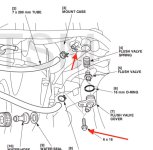Recoil Rob
Member
The flushing system on the 2004 Honda 150 I have was never used by the previous owner and the flush valve must be frozen, water will not go through.
My docking situation will not allow me to flush with muffs, which I would much prefer, so I have to get the flush system working.
I cannot remove the 6x16 steel bolt holding the flush valve cover in place, after 16 years it must be frozen to the aluminum crankcase.
I've tried heating it as much as I am comfortable, soaked it with Kroil every day for a week, hitting it with a hammer and steel rod, and still it will not budge with a 6pt socket.
Any suggestions to remove the bolt, or another flushing option it it can't be?
thanks,
Rob

My docking situation will not allow me to flush with muffs, which I would much prefer, so I have to get the flush system working.
I cannot remove the 6x16 steel bolt holding the flush valve cover in place, after 16 years it must be frozen to the aluminum crankcase.
I've tried heating it as much as I am comfortable, soaked it with Kroil every day for a week, hitting it with a hammer and steel rod, and still it will not budge with a 6pt socket.
Any suggestions to remove the bolt, or another flushing option it it can't be?
thanks,
Rob


